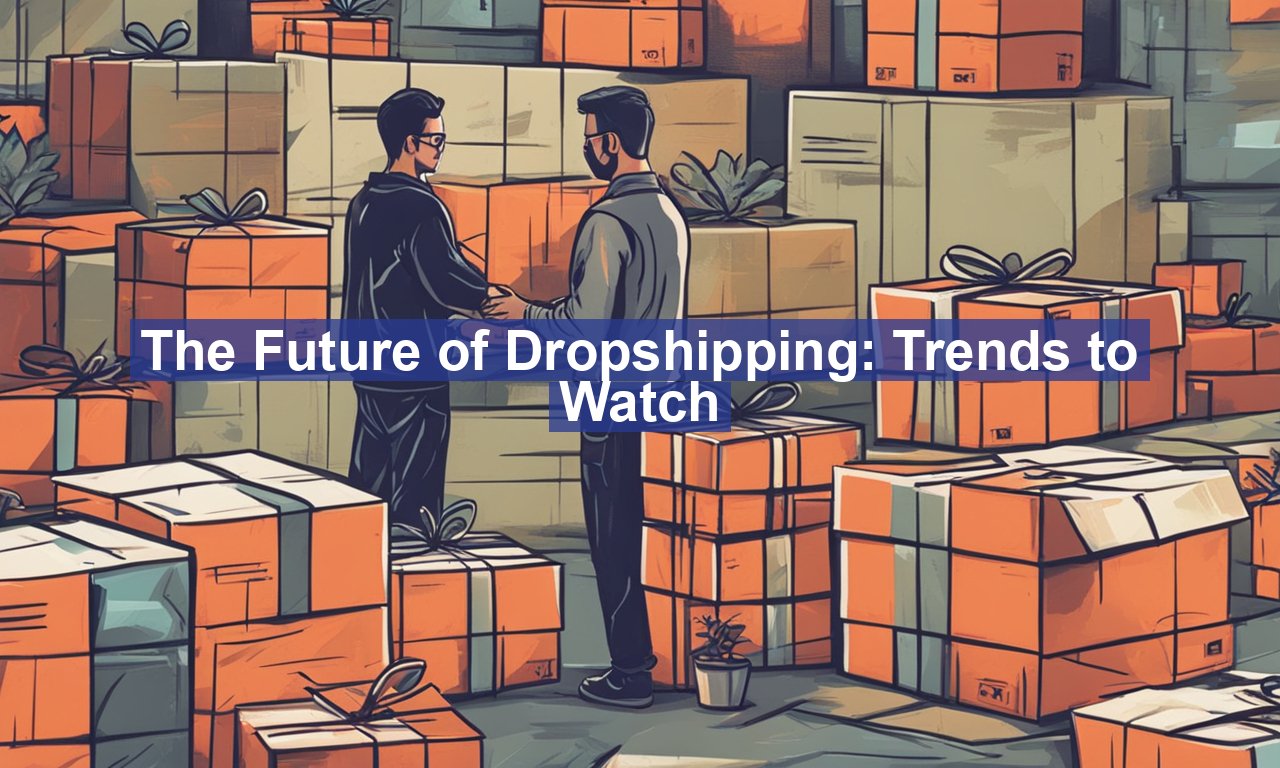The future of Dropshipping: trends to watch as the digital landscape continues to evolve, dropshipping—a business model that has allowed countless entrepreneurs to launch online stores without the hefty overhead of traditional retail—faces both exciting opportunities and pressing challenges. While some predict its decline, the reality is that dropshipping is not going anywhere.
Instead, it’s morphing, improving, and offering fresh avenues for growth. If you’re keen on jumping into or staying ahead in the dropshipping arena, you’ll need to keep a keen eye on the latest trends shaping its future.
Understanding the Changing Dynamics of Dropshipping
While dropshipping continues to be a popular entry point for budding entrepreneurs, its landscape is rapidly shifting. A key factor driving this change is customer expectations. Today’s consumers are savvy, loaded with information at their fingertips, and expecting not just a product, but an experience. This evolution in consumer behavior calls for a keen understanding of customer experience (CX), which has become the bedrock of successful dropshipping endeavors.
Top Trends Shaping The Future of Dropshipping: Trends to Watch
1. Automation and AI
No conversation about the future of business is complete without mentioning automation and artificial intelligence (AI). These technologies are revolutionizing dropshipping by simplifying and speeding up processes. From inventory management to customer service, AI-driven tools are streamlining operations, allowing dropshipping businesses to offer faster services and reduce human error.
Automation can handle repetitive tasks such as product listing updates, pricing adjustments, and order tracking. By reducing manual intervention, dropshippers save time and money, which can be reinvested into crucial business areas, such as marketing and product sourcing. Online platforms increasingly offer tools that integrate AI capabilities, making it essential for dropshippers to leverage these innovations to remain competitive.
2. Niche Markets and Personalized Products
With market saturation becoming an issue in many sectors, aspiring dropshippers are finding success by catering to niche markets. Products that speak to specific interests or solve unique problems can set a store apart in a crowded landscape.
In addition to niche markets, personalized products are gaining traction. The ability to offer custom designs or tailored products to your audience can significantly enhance customer engagement and loyalty. As personalization technology becomes more accessible, offering such solutions in your dropshipping store can be a defining factor for future success.
3. Sustainability as a Selling Point
As awareness around environmental issues grows, so does consumer demand for sustainable products. Dropshippers can capitalize on this trend by ensuring their products and suppliers follow eco-friendly practices. From sourcing biodegradable materials to adopting carbon-neutral shipping methods, integrating sustainability into your business model not only helps the environment but also appeals to a more conscientious customer base.
Moreover, businesses can tell compelling brand stories around their commitment to sustainability, which can become a powerful marketing tool. For example, emphasizing recycled packaging or partnerships with ethical suppliers can significantly strengthen your brand image.
4. Enhanced Mobile Shopping
The shift towards mobile shopping shows no sign of slowing down, with over half of global web traffic now coming from mobile devices. Thus, dropshipping businesses must optimize their online stores for mobile users, ensuring a seamless shopping experience across all platforms. It’s not just about being mobile-friendly; it’s about being mobile-first. Prioritizing mobile UX design, payment gateways, and intuitive interfaces is essential to capture the growing market of mobile shoppers.
5. Focus on Brand Building
In the past, dropshipping’s appeal partly lay in its simplicity—create a store, find a supplier, and start selling. However, the market has matured, and building a recognizable brand identity is more crucial than ever. Simply listing products isn’t enough; consumers are drawn to brands they connect with.
Investing in compelling branding strategies—including a unique logo, consistent marketing messages, robust storytelling, and an engaging social media presence—can differentiate your store from the competition. Furthermore, strong branding fosters trust and credibility, essential elements for long-term business success.
Challenges to Consider
While dropshipping continues to hold promise, it’s essential to be aware of the challenges that come with it. Competition is intense, with many people attempting to sell the same products. This scenario can lead to price wars, squeezing profit margins, and making it difficult to maintain growth.
Additionally, because the model relies heavily on third-party suppliers, control over product quality and shipping times is limited. This can lead to varying customer experiences, which can impact your brand reputation. Establishing stringent quality checks and forming solid relationships with reliable suppliers are critical strategies to mitigate these issues.
The Bottom Line
The future of Dropshipping: trends to watch are bright for those willing to adapt to changing trends and technologies. By embracing automation, tapping into niche markets, prioritizing sustainability, enhancing mobile experiences, and investing in brand building, dropshippers can not only survive but thrive in a competitive landscape.
As you embark or continue on your dropshipping journey, stay informed, be flexible, and never stop innovating. By keeping your finger on the pulse of emerging trends and adapting quickly, you can ensure your dropshipping business is future-proofed and primed for success.


